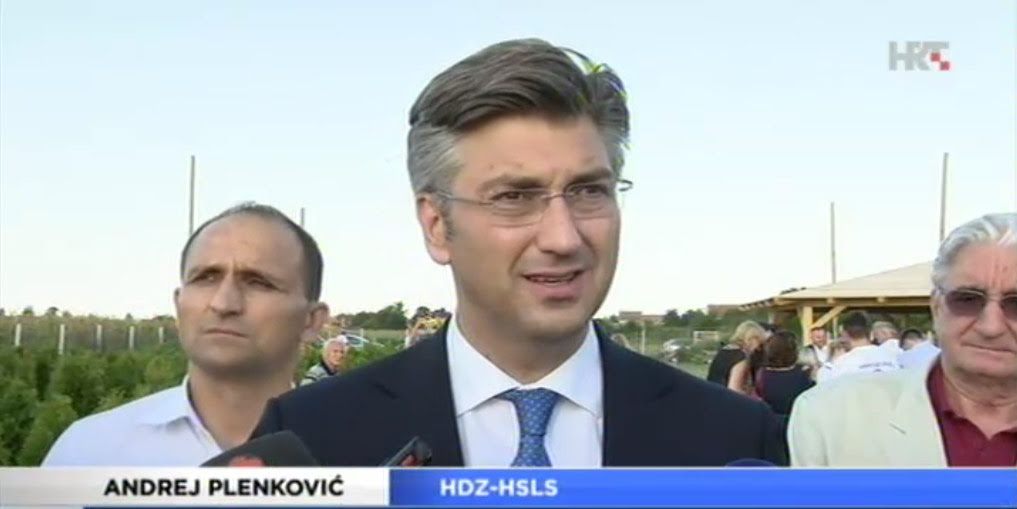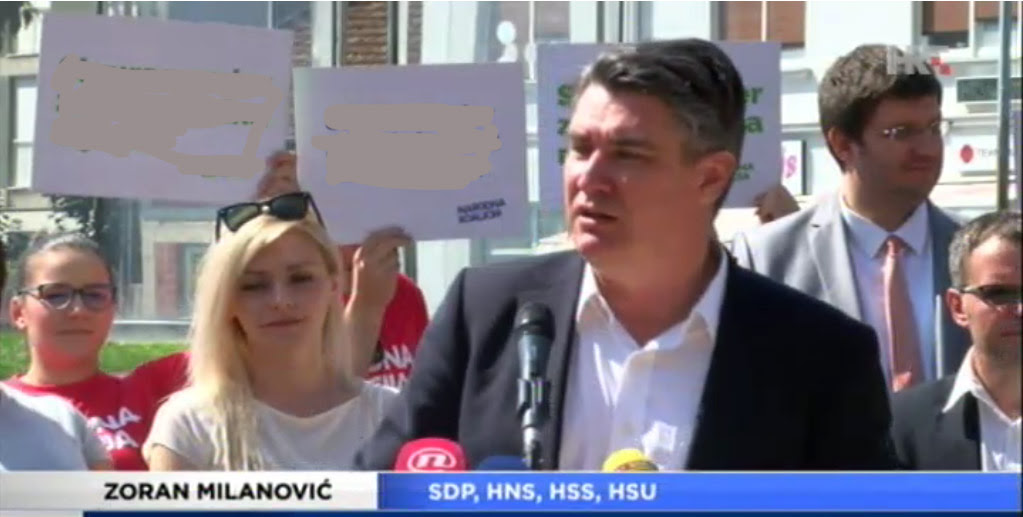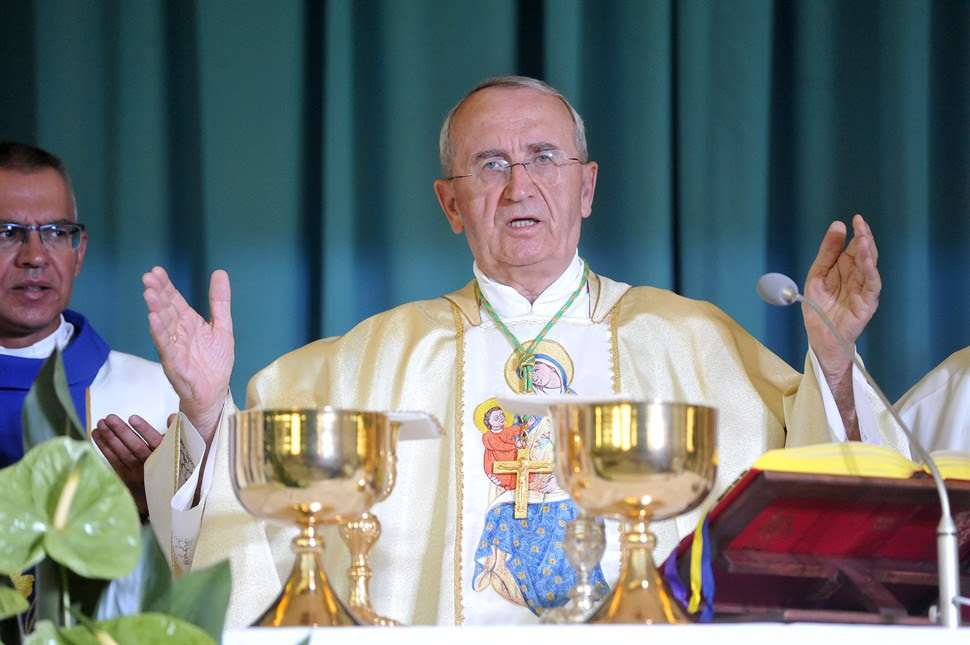Early general elections in Croatia coming up second weekend of September 2016 have not only got behind them the brutally rushed toppling of a short-lived minority HDZ/Croatian Democratic Union–led government amidst founded and unfounded scandals, but are seeing the formation of snappish coalitions and an emergence of miniature political parties and individuals with irritating and irritable chips on their shoulders. All this spells out a possibility that the election results could well come back and bite the Croatian citizens in the back. With some unnatural coalitions between political parties that primarily point to individual candidate desperation to win seats at all costs and the stepping up the rhetoric on the stale dog’s breakfast of a guaranteed fantastic and prosperous future where there’ll be jobs for all, no thieves or corrupt in the public administration and public companies, debilitating foreign debt beat to a pulp and such, one really has difficulties is seeing much change on the political leadership scene from the previous elections of last decade or so. The only change that perhaps one might see is in seemingly more aggressive competition to secure local votes for individuals or smaller parties acting locally rather than nationally. It appears that most of the political coalitions in the elections race are counting on the draining of individual votes from bigger rival political parties to individual candidates running against those rival parties and who perhaps have local prestige or respect regardless of the fact they and their programs are hopeless for the nation as a whole. HDZ and its partners continue to emit the most sober campaign in comparison to the other parties.
Politička stranka pravaša Pomak i General Željko Glasnović
Photo Screenshot hrt.ba 1 September 2016
For the parliament of 151 seats there are, according to the Croatian Electoral Commission) 2, 456 candidates (40% women; age range between 18 and 90 years) registered and are vying for a seat, including 29 candidates for ethnic minorities. 2016 polls will dish out to the voters 20 various coalitions of 60 political parties, 29 political parties going independently, 3 lists of independent candidates and 6 lists of candidates for ethnic minorities. The sheer numbers of candidates is enough to give any person desirous of a stable government and stable political climate a migraine. It’s very clear that these elections are much about securing a seat for an individual candidate and then pinning it to the victory of their coalition’s leading party. Croatia is bound to be the big loser if the coalitions formed to muster up individual local candidate wins into a win of government or significant number of seats actually win government. The disarray will no longer be in the uncompromising differences between political parties' platforms but within the actual coalition trying to govern the country as if it's one party. In this turbulent sea of thousands of candidates and dozens of political parties running for government the Croatian media has so far given the impression that there are, after all, some leading political camps that have good chances of winning either majority or minority government or the chance to contribute to the forming of a future government.

Andrej Plenkovic,
HDZ/Croatian Democratic Union Photo: Screenshot hrt.hr 3 September 2016
The centre-right party Croatian Democratic Union, HDZ, was the relative winner in November 2015 elections when it won 59 seats. With Tihomir Oreskovic as its technocratic Prime Minister HDZ held minority government with Most/Bridge group of independents only to be toppled amidst scandals in June of this year. HDZ was at the helm of Croatia leading it into secession from communist Yugoslavia and holding government between 1990 and 2000, during the war years, as well as between 2003 and 2011. The new HDZ leader Andrej Plenkovic, a experienced diplomat and EU parliamentarian, was elected as party president in July of this year, seemingly turning the party more to the centre. HDZ decided to compete in the elections alone this time, only considering coalition with individual candidates/partners from smaller parties in certain local areas. Its election campaign trail appears to be spotted with significant victory projections across traditionally conservative electorates but not seemingly enough to project at this stage an outright majority government win on September 11. One thing that’s standing out in HDZ election campaign is its rather successful thrust to present Plenkovic to the Croatian public as a desirable leader for the country, however, the campaign appears in my view to lack adequate presentation of the other ingredient usually associated with election victory: presentation of a strong team rather than individual that will lead Croatia into a better future.

Bozo Petrov
Most/Bridge of independent lists Photo: Screenshot hrt.hr 3 September 2016
The Most/Bridge of Independent Lists is a relatively new political party functioning as a group of individual politicians, small-town and municipal mayors formed in 2012 in the small town of Metkovic that claimed and claims to be a ‘third way’ party – the solution to get Croatia out of the rut of a two-party system or two big political parties dominating the political scene in Croatia. It secured 19 seats in November 2015 elections and, hence, became the element that shook and rattled Croatia for a few weeks to finally decide to side with HDZ rather than centre-left Social Democrats/SDP in forming Croatia’s short-lived government in January 2016. It’s president Bozo Petrov, a 37-year-old psychiatrist from Metkovic, where he has been mayor since 2013 has lost a number of his coalition members due to disputes but regardless of that Most/Bridge is still expected to come in as a “third force” and perhaps once again be the one to call the shots which of the major parties (HDZ or SDP) will form the future government even if Petrov says that Most will never go into a coalition again.
History repeats itself saying has never to my knowledge come with good or a positive thing.

Zoran Milanovic
SDP/Social Democratic Party Photo: Screenshot hrt.hr 3 September 2016
In its new coalition the centre-left SDP/Social Democratic Party (the former League of Communists) led by Zoran Milanovic has changed its name from Croatia Grows to the People’s Coalition and added or changed the parties in its coalition to the point that spells out desperation to win even if judging by its performance in the 2011-2015 government - it should be placed on a political scrap heap for quite a number of years. This time around SDP continues to work with the centre-left Croatian People’s Party/HNS and has pulled in new coalition partners in the Croatian Party of Pensioners, HSU, and the centre-right Croatian Peasants’ Party, HSS, which was a part of the HDZ-led Patriotic Coalition last November. It seems that HSS’s leader’s Kreso Beljak’s history of vandalism and theft convictions under the crimes law makes no difference in SDP’s selection of its coalition partner’s. While the notions of rehabilitation and second chances may be an acceptable way to lead life they certainly don’t factor as acceptable for members of a government in my book, especially when there's much noise about corruption and theft in government bodies. Social Democrats are leading a campaign of dirt slinging against HDZ especially, and yet they themselves seem to have gathered quite a bit of dirt under their wings, showing it off, even, without blinking an eye. Not a good look for a party desirous of winning government but - there it is.

Ivan Lovrinovic (L) and
Ivan Vilibor Sincic (R) Only Option Coalition Photo: makarsko-primorje.com
The so-called Only Option Coalition was formed in July and is led by the anti-establishment Living Wall. Living Wall was created in 2011 from a civic movement fighting foreclosures and evictions by occupying buildings and is led by Ivan Vilibor Sincic. Three former Most/Bridge MPs, as well as the Association Franak (an NGO set up to lobby for people with loans in Swiss francs, whose debts rose due to a steep rise in the value of the franc) join living Wall in the coalition. The Only Option Coalition is said to be gaining momentum that may, as far as seats won is concerned, place it on equal footing to the Most/Bridge wins and, therefore, make it an another camp with which a future minority government would negotiate terms to form government especially since Most/Bridge says it will not enter into any coalition with anybody.

Milan Bandic
Coalition for Prime Minister Photo: hrt.hr
The veteran Zagreb Mayor Milan Bandic and his party Bandic Milan 365 - Party of Labour and Solidarity, leads the current Coalition for Prime Minister. Bandic, an ex-SDP member, has joined forces with two other ex-major party members who are factoring noticeably on the Croatian political scene: Ivo Baldasar from city of Split, an ex-SDP and Radimir Cacic of Reformists, an ex- HNS member. Bandic’s coalition also claims to be Croatia’s answer for a “third way”, however current polls predictions are quite slim for this camp – up to 2 or 3 seats in total. There are two regional parties that won seats at the November elections and are likely to win some at the upcoming polls: the Istrian Democratic Assembly, IDS, and the Croatian Democratic Alliance of Slavonia and Baranja, HDSSB. While IDS is likely to continue favouring SDP as they themselves are riddled with former communists, HDSSB if it wins seats although ideologically close to the more right than centre-right is likely to keep its final preferences in the pocket to the last minute.
While polls suggest that a week before elections every fifth voter is undecided (HRT news 3 September 2016) and, therefore, surprises are possible including a majority government elected, the fact remains that neither of the two major parties seem to have done much work in wooing new voters into their camps and the election results will demonstrate that a large number of Croatian voters leaning towards the centre-left parties have made little if any progress in leaving the lingering pro-communist Yugoslavia mentality behind. Perhaps that is why the Croatian Bishops have Thursday 25 August sent via Archbishop of Zadar Zelimir Puljic their own message to Croatian voters to “familiarise themselves with candidates’ programs, especially the ones to do with the economy and to focus their attention on how individual political parties intend to continue with the process of education reform and the democratisation of the society as well as the confrontation with the communist past.” Could not have said it better myself. Ina Vukic, Prof. (Zgb); B.A., M.A.Ps. (Syd)
|
يسوع المسيح هو الطريق والحق والحياة. وساقوا يسوع إلى رئيس الكهنة. فاجتمع إليه جميع رؤساء الكهنة والشيوخ والكتبة. وتبعه بطرس من بعيد إلى داخل دار رئيس الكهنة، وكان جالسا مع الحراس يستدفيء عند النار. وأخذ رؤساء الكهنة والمجلس الأعلى كله يبحثون عن شهادة على يسوع ليقتلوه، فلم يجدوا. فقد شهد كثيرون عليه زورا، ولكن شهاداتهم كانت متناقضة.
subota, 3. rujna 2016.
CROATIA SNAPPPPISH COALLITIONS FOR SNAP ELECTIONS
Pretplati se na:
Objavi komentare (Atom)





Nema komentara:
Objavi komentar